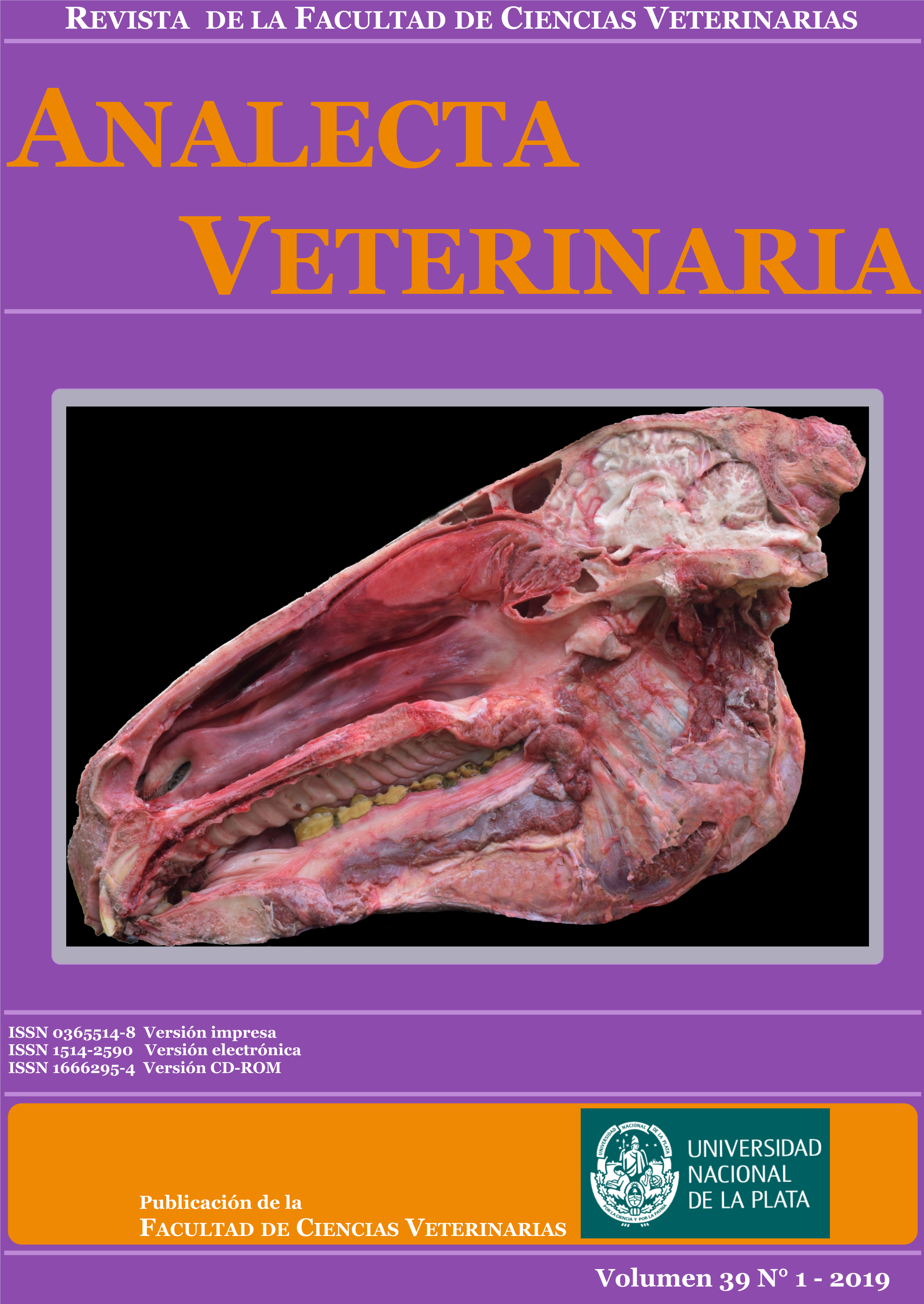De reactivo biológico al animal sintiente: el bienestar animal como cambio de paradigma en la investigación biomédica y su impacto en los resultados
El animal sintiente: un cambio de paradigma
DOI :
https://doi.org/10.24215/15142590e034Mots-clés :
Animales de experimentación, bienestar animal, enriquecimiento ambiental, sintienciaRésumé
El uso de animales como reactivos biológicos para investigación científica se ha justificado desde los inicios de la civilización, cuando solo servían para satisfacer las necesidades del hombre. El concepto de reactivo biológico ha cambiado al cobrar relevancia el bienestar animal, una problemática específica de la relación humano animal referida inicialmente a los animales de producción y que ha impactado en todos los usuarios de animales. Se logró avanzar en el conocimiento de las especies, sus necesidades y en la comprensión de su comportamiento. Con esta redefinición del animal surge un nuevo objeto de estudio para la ciencia: el estado del animal en sus intentos de lidiar con su entorno y de afrontar las demandas del ambiente. Como consecuencia, se han realizado enriquecimientos del ambiente sin suficientes estudios previos llevando
a la obtención de resultados erróneos. Por lo tanto, es imperativo trabajar con indicadores específicos de bienestar que permitan diagnosticar y remediar las condiciones de pobre bienestar. Los animales provistos a los investigadores deberían contar con certificaciones sobre la cepa, condiciones de crianza y, además, tipo y modalidad de enriquecimiento e indicadores de bienestar animal antes de iniciar su utilización. En el futuro, el bienestar animal no solo debe estar en la nota ética, sino que debe ser parte inexcusable de la sección metodológica de los estudios experimentales.
Références
ASAB (Association for the Study of Animal Behaviour). 1986. Guidelines for the use of animals in research. Animal Behaviour. 34(1):315-18. doi.org/10.1016/0003-3472(86)90056-4
Baumans V, Coke C, Green J, Moreau E, Morton D, Patterson-Kane M, Reinhardt A, Reinhardt V, Van Loo P. 2007. Making -lives easier for animals in research labs. Discussions by the Laboratory Animal Refinement & Enrichment Forum. Washington DC, Animal Welfare Institute (AWI). pp. 105. Disponible en https://www.parsemus.org/wp-content/uploads/2012/11/Making_Lives_Easier1.pdf
Baumans V. The welfare of laboratory mice. En: Kaliste E. 2007. The welfare of laboratory animals. Dordrecht, Springer, pp. 119-52. Disponible en https://link.springer.com/content/pdf/10.1007%2F978-1-4020-2271-5.pdf
Beaver BV. 1989. Environmental enrichment for laboratory animals. Institute Laboratory Animal Resources (ILAR) News. 31 (2):5-11. doi.org/10.1093/ilar.31.2.5
Berdoy M. 2003. Ratlife. [En línea]. Disponible en www.ratlife.org, [Accedido 29/09/2018].
Brambell Rogers FW. 1965. Report of the technical committee to inquire into the welfare of animal slept under intensive livestock husbandry systems. London, Her Majesty's Stationery Office.
Broom D. 1986. Indicators of poor welfare. British Veterinary Journal. 142(6):524-26. doi:10.1016/0007-1935(86)90109-0
Broom D. 2016. Sustentabilidad y sintiencia en relación con el bienestar animal. Conferencia con motivo de recibir el Doctorado Honoris causa, Universidad de Buenos Aires (UBA). Revista InfoVet. Número especial, Facultad de Ciencias Veterinarias, Universidad de Buenos Aires.
Carlson BA. 2017. Early life experiences have complex and long-lasting effects on behavior. Proceeding of the National Academy of Sciences of the Unites States of America (PNAS).114(44):11571-3. doi: 10.1073/pnas.1716037114
Cardoso CVP, Almeida AECC. 2014. Laboratory animal: biological reagent or living being? Brazilian Journal of Medical and Biological Research. 47(1):19-23. doi: 10.1590/1414-431X20133365
Chamove AS. 1989. Environmental enrichment: A review. Animal Technology, 40(3):155-78. Reproduced with permission of the Institute of Animal Technology in Animal Welfare Institute. Disponible en:https://awionline.org/content/environmental-enrichment-review
Chandrasekera Ch. 2016. From sentience to science: Limits of anthropocentric cognition. Animal Sentience. 5(2). Disponible en: https://animalstudiesrepository.org/animsent/vol1/iss5/2/
CONADEA (Comisión nacional de experimentación animal). 2016. Ley de protección para los animales de experimentación utilizados con fines científicos y educativos (Proyecto 6758-D-2016) [En línea] Disponible en: https://www.diputados.gov.ar/proyectos/proyecto.jsp?exp=6758-D-2016. [Accedido 12/11/2018].
Dawkins MS. 1990. From an animal’s point of view: motivation, fitness and animal welfare. Behavioral and Brain Sciences. 13(1):1-9. doi: 10.1017/S0140525X00077104
De Grazia D. 1996. Taking animals seriously: Mental life and moral status. New York, Cambridge University Press. Disponible en: http://hdl.handle.net/10822/751779
De Mello M. 2012. Animals and society: an introduction to human-animal studies. New York, Colombia University Press.
De Waal FBM. 1999. Anthropomorphism and anthropodenial: consistency in our thinking about humans and other animals. Philosophical Topics. 27 (1):255-80.
Duncan IJH. 1998. Behaviour and behaviour needs. Poultry Science. 77(12):1766-72. doi: 10.1093/ps/77.12.1766
Fraser D. 2004. Applying science to animal welfare standards. Global conference on animal welfare: an OIE initiative. Paris, pp. 121-32.
Hau J, Shapiro SJ. The welfare of non human primates. En: Kaliste E. 2007.The welfare of laboratory animals. Dordrecht, Springer, pp. 291-314. Disponible en: https://link.springer.com/chapter/10.1007%2F978-1-4020-2271-5_13 [Accedido 12/11/2018].
Hawkins P. 2002. Recognizing and assessing pain, suffering and distress in laboratory animals: a survey of current practice in the UK, with recommendations. Laboratory Animals. 36(4):378-95. doi: 10.1258/002367702320389044
Hawkins P, Morton DB, Burman O, Dennison N, Honess P, Jennings M, Lane S, Middleton V, Roughan JV, Wells S, Westwood K. 2011. A guide to defining and implementing protocols for the welfare assessment of laboratory animals: 11th report of the BVAAWF/FRAME/RSPCA/UFAW Joint Working Group on Refinement Laboratory Animals. 45(1):1-13. doi: 10.1258/la.2010.010031
Held SDE, Spinka M. 2011. Animal play and animal welfare. Animal Behaviour. 81(5):891-9. doi:10.1016/j.anbehav.2011.01.007.
Hughes BO. 1976. Behaviour as an indicator of welfare. Proceeding of the fifth european poultry confererence. Malta, pp. 1005-18.
Ikemoto S, Panksepp J. 1992. The effects of early social isolation on the motivation for social play in juvenile rats. Developmental Psychobiology. 25(4):261-74. doi: 10.1002/dev.420250404.
ISAE (International Society for Applied Ethology). 2017. Guidelines for ethical treatment of animals in applied animal behaviour and welfare research. [En línea] Disponible en: https://www.applied-ethology.org/Ethical_Guidelines.html [Accedido 24/10/2018].
Kohn DF, Martin ME, Foley PL, Morris TH, Swindle MM, Voglet GA, Wicson SK. 2007. Guidelines for the assessment and management of pain in rodents and rabbits. Journal of the American Association for Laboratory Animals Science 46-(2):97-108.
Lang CM, Vessell ES. 1976. Environmental and genetics factors affecting laboratory animals: impact on biomedical research. Introduction. Federal Proceedings. 35(5):1123- 4.
Langford DJ, Bailey AL, Chanda ML, Clarke SE, Drummond TE, Echols S, Glick S, Ingrao J, Klassen-Ross T, La Croix-Fralish ML, Matsumiya L, Sorge RG, Sotocinal SG, Tabaka JM, Wong D, van den Maagdenberg AM, Ferrari MD, Craig KD, Mogil JS. 2010. Coding of facial expressions of pain in the laboratory mouse. Nature Methods 7 (6):447-9. doi:10.1038/nmeth.1455
Love JA. 1994. Group housing: Meeting the physical and social needs of the laboratory rabbit. Laboratory Animal Science. 44(1):5-11.
Maschi F. 2017. El efecto del enriquecimiento ambiental sobre la variabilidad de parámetros fisiológicos y conductuales en ratones de laboratorio. Tesis de doctorado. Facultad de Ciencias Veterinarias. Universidad Nacional de La Plata. http://sedici.unlp.edu.ar/handle/10915/63094.
Mason, P. 1997. The brown dog affair: the story of a monument that divided the nation. Londres, Two Sevens Publishing.
Mellor DJ, Reid CSW. Concepts of animal well-being and predicting the impact of procedures on experimental animals. En: Baker RM, Jenkin G, Mellor DJ. 1994. Proceedings of the improving the well-being of animals in the research environment. Glen Osmond, Australia, Australian & New Zealand Council for the Care of Animals in Research and Teaching (ANZCCART), pp.3-18.
Mellor DJ. 2016. Updating animal welfare thinking: moving beyond the “five freedoms” towards “a life worth living”. Animals 6(3):21. doi: 10.3390/ani6030021
Mendl M, Paul ES. 2008. Do animals live in the present?: Current evidence and implications for welfare. Applied Animal Behaviour Science. 113(4):357-82. doi: 10.1016/j.applanim.2008.01.013
Mendl M, Burman OHP, Parker RMA, Paul ES. 2009. Cognitive bias as an indicator of animal emotion and welfare: emerging evidence and underlying mechanisms. Applied Animal Behaviour Science. 118(3-4):161-81. doi: 10.1016/j.applanim.2009.02.023
Mendl M, Burman OHP, Paul ES. 2010. An integrative and functional frame work for the study of animal emotion and mood. Proceeding of the Royal Society B. doi: 10.1098/rspb.2010.0303
Morton DB. 1990. Adverse effects in animals and their relevance to refining scientific procedures. Alternatives to Laboratory Animals (ATLA). 18:29-39.
Morton DB, Jennings M, Batchelor GR, Bell D, Birke L, Davies K, Eveleigh JR, Gunn D, Heath M, Howard B, Koder P, Phillips J, Poole T, Sainsbury AW, Sales GD, Smith DJA, Stauffacher M, Turner RJ. 1993. Refinements in rabbit husbandry. Second report of the BVAAWF/FRAME/RSPCA/UFAW Joint Working Group on Refinement. Laboratory Animals. 27 (4):301-29
Nevison CM, Hurst JL, Barnard CJ. 1999. Why do male ICR(CD-1) mice perform bar-related (stereotypic) behaviour?. Behavioural Processes. 47-(2):95–111. doi: 10.1016/S0376-6357(99)00053-4.
Newberry RC. 1995. Environmental enrichment: increasing the biological relevance of captive environments. Applied Animal Behaviour Science. 44(2-4):229-43. doi: 10.1016/0168-1591(95)00616-Z
Olfert ED, Cross BM, Mc William AA. 1998. Manual sobre el cuidado y uso de los animales de experimentación (Estol L, Dugas R, Traducción en español), Ontario, Canadian Council on Animal Care (CCAC). Disponible en http://www.fcv.unl.edu.ar/comite/ManualsobreelcuidadoyusodeanimalesdeexperimentacionConsejo%20Canadiense.pdf.
OMS (Organización Mundial de la Salud). [En línea]. Disponible en http://www.who.int [Accedido 29/9/2018].
Paul ES, Harding EJ, Mendl M. 2005. Measuring emotional processes in animals: the utility of a cognitive approach. Neuroscience & Biobehavioral Reviews. 29(3):469-91. doi: 10.1016/j.neubiorev.2005.01.002
Poole T. 1998. Meeting a mammal´s psychological needs: basic principles. En: Second nature: environmental enrichment for captive animals. Eds. Sheperdson D. Mellen J, Hutchins M. Washington, Smithsonian Institution Press. pp. 83-96.
Proctor H. 2012. Animal sentience: where are we and where are we heading? Animals. 2(4):628-39. doi:10.3390/ani2040628.
Segerdahl P. 2007. Can natural behavior be cultivated? The farm as local human/animal culture. Journal of Agricultural and Environmental Ethics. 20(2):167-93.
Shepherdson DJ. Tracing the path of environmental enrichment in zoos. En: Shepherdson DJ, Mellen JD, Hutchins M. 1998. Second nature: environmental enrichment for captive animals. Washington DC, Smithsonian Institution Press, pp. 1-12.
Singer, P. 2015. Animal liberation: The definitive classic of the animal movement. New York, Open Road Media.
Slater AM, Cao L, 2015. A protocol for housing mice in an enriched environment. Journal of Visualized Experiments. 100:e52874. doi: 10.3791/52874.
Sorensen D. Animal welfare: an introduction. En: Kaliste E. 2007.The welfare of laboratory animals. Dordrecht, Kluwer Academic Publisher, pp. 3-14.
Stauffacher M. 1995. Environmental enrichment, fact and fiction. En: Environmental enrichment information resources for laboratory animals. Animal Welfare Information Center (AWIC) Resource Series. 2:145-9.
Stauffacher M. Housing requirements: What ethology can tell us. En: van Zutphen LFM, Balls M, eds. Animal alternatives, welfare and ethics. 1997a. Amsterdam, Elsevier Science BV. pp. 179-86.
Stauffacher M. Comparative studies on housing conditions. En: O’Donoghue PN, ed. 1997b Harmonization of laboratory animal husbandry. London, Royal Society of Medicine Press, pp. 5-9.
Stauffacher M. Refinement in rabbit housing and husbandry. En: Balls M, van Zeller AM, Halder M, eds. 2000. Progress in the reduction, refinement and replacement of animal experimentation, developments in animal and veterinary sciences. Amsterdam, Elsevier Science BV. pp. 1269-77.
Townsend P. 1997. Use of in-cage shelters by laboratory rats. Animal Welfare. 6(2):95-103.
Turner J. 1999. Factory farming and the environment: a report for compassion in world farming trust. Petersfield, Hampshire, Compassion in World Farming Trust.
van de Weerd HA, Baumanns V. Environmental enrichment in rodents. En: Environmental enrichment resources for laboratory animals. 1995. Animal Welfare Information Center (AWIC) Resource Series. 6(2):95-103.
van Loo PLP, Kruitwagen CLJJ, Koolhaas JM, van de Weerd HA, van Zutphen LFM, Baumans V. 2002. Influence of cage enrichment on aggressive behaviour and physiological parameters in male mice. Applied Animal Behaviour Science. 76(1):65-81. doi: 10.1016/S0168-1591(01)00200-3
van Loo PLP, Mol JA, Kolhaas JM, van Zutphenbf, Baumans V. 2001. Modulation of aggression in male mice: influence of group size and cage size. Physiology and Behaviour. 72(5):675-83.
Westlund K. 2014. Training is enrichment and beyond. Applied Animal Behaviour Science. 152:1-6. doi:10.1016/j.applanim.2013.12.009.
World Veterinary Association. 1989. World Veterinary Association policy statement on animal welfare, well-being, and ethology. Institute for Laboratory Animal Research (ILAR) Journal. 31(4):29-30. doi: 10.1093/ilar.31.4.29.
Young RJ. Environmental enrichment for captive animals. 2003. Universities Federation for Animal Welfare (UFAW). Ames, Iowa, Blackwell Publishing Professional.
Téléchargements
Publié
Numéro
Rubrique
Licence
Los autores/as conservan los derechos de autor y ceden a la revista el derecho de la primera publicación, con el trabajo registrado con la licencia de atribución de Creative Commons, que permite a terceros utilizar lo publicado siempre que mencionen la autoría del trabajo y a la primera publicación en esta revista.

Analecta Veterinaria por Facultad de Ciencias Veterinarias se distribuye bajo una Licencia Creative Commons Atribución-NoComercial-SinDerivar 4.0 Internacional.




























